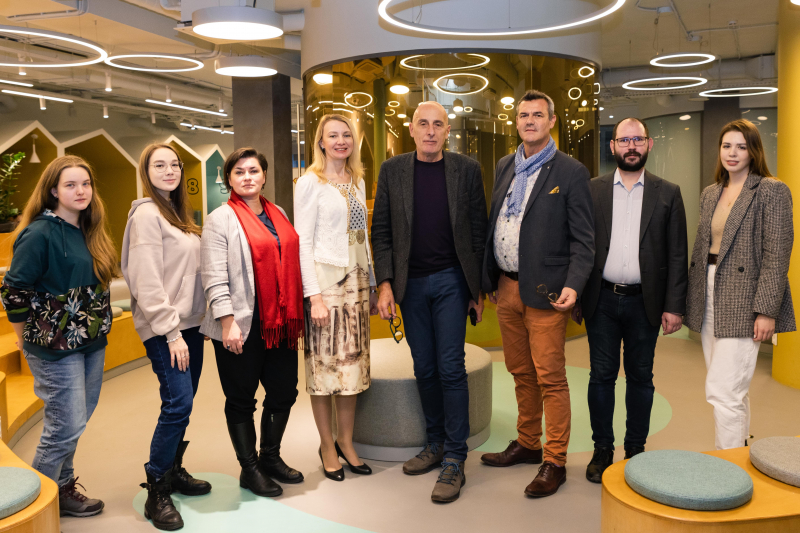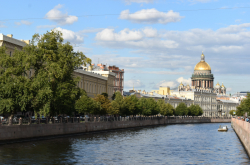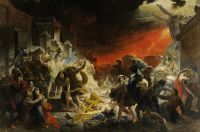Art tours over Zoom
For several years now, ITMO University’s scientists and their French colleagues have been working on terahertz devices and systems for the detection of defects in paintings. This collaboration was taken to a new level in late 2020, when the Heritage Science Lab was founded at ITMO. The lab’s main task is to study museum items and cultural heritage objects using the methods of optical spectroscopy and tomography.
The team’s plans were affected by the pandemic; for some time, the international experts were unable to receive their visas and come to Russia. But the project went on: starting in January 2021, the researchers got together online every Friday to discuss the plans for the lab’s development. Sometimes, this new work format led to amusing situations. For instance, in order to show their French colleagues a collection of Russian religious icons, the Russian team members had to tour an old wooden church in the north of Russia with a laptop in their hands – much to the surprise of the locals.
In October, Michel Menu, the lab’s scientific supervisor and head of the megagrant project, and Vincent Detalle, the head of French Mobile Laboratory for the Study of Cultural Heritage (MOLAB), were able to come to St. Petersburg and deliver a series of lectures on heritage science and its development in France. They also spoke about the use of new technologies for art analysis and forgery detection.
Michel Menu and Vincent Detalle. Photo by Dmitry Grigoryev / ITMO.NEWS
The lab today
At this moment, the laboratory is engaged in the development of spectroscopy (the study of spectrums and special lines for the identification of colors and pigments), tomography (the creation of tomographic images of paintings), and innovative methods. The megagrant has allowed the researchers to gain access to cutting-edge technologies, such as compact terahertz devices in the far infrared band that can be taken around to study various objects. The team plans to compile the results of their research into a database, which is already in development. The database will be available to other specialists in the spirit of the open science movement. As its creators explain, this will help establish a scientific community and facilitate the exchange of knowledge.
In its aim to achieve breakthrough results, the lab is developing in three fields at once. Among the key focus areas are: optics and computer vision for automated canvas analysis; art history and studies of the creation process of artworks; and databases of experimental data. The project involves not only world-renowned scientists, but also students – who are free to participate in whatever way they prefer.
“There are 20 staff members at our laboratory, and half of them are Master’s and PhD students. I love that young people are becoming involved in this process, communicating with our colleagues from abroad, and sharing their enthusiasm. We’ve already agreed with Vincent and Michel that a few of our most talented students will come to France to work on different tasks: analyze images, create optical circuitry, and develop databases,” says Olga Smolyanskaya.
Olga Smolyanskaya. Photo by Dmitry Grigoryev / ITMO.NEWS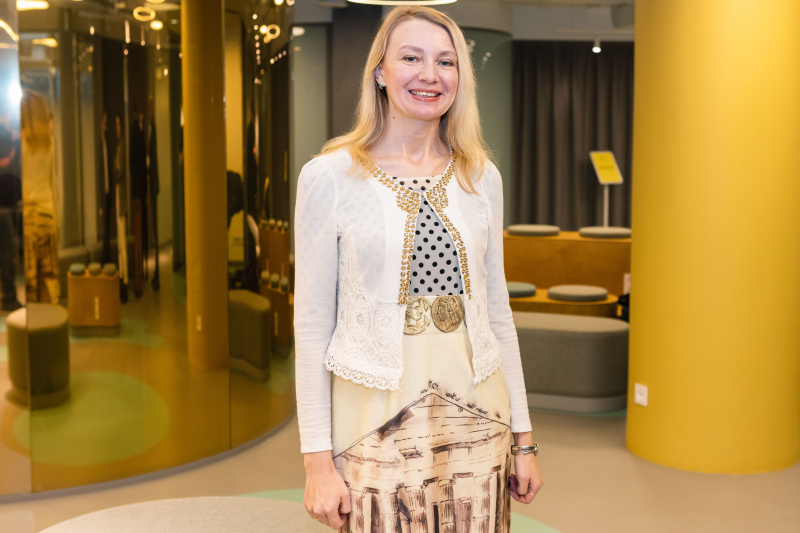
The Russian Museum and beyond
The researchers are already collaborating with the Russian Museum and plan to expand their partnership in the future. In addition to taking part in workshops hosted by the museum, ITMO staff will choose copies of Russian religious icons and avant-garde art from its collection in order to study them in detail and publish their findings in scientific journals.
The two genres were chosen for three reasons. First of all, icons and avant-garde art are the first things that come to the minds of non-Russians when they’re asked to think about Russian art. Secondly, icons that once made up an iconostasis may end up separated and stored in various collections; analyzing their creation technique may reveal that some of them are actually parts of a single work. It is also interesting to find out how the techniques have changed over time, which pigments were used by the artists, and what makes icons made in Vladimir different from those made in, say, Novgorod or even Constantinople.
Lastly, there is a great deal of forgeries among the avant-garde paintings stored in the Russian Museum’s collection. From a scientific point of view, it would be highly insightful to know what separates genuine works by Malevich from copies made by others – as well as how the techniques used in that genre affected the style of other artists.
“As a result, the museum’s laboratory will be able to adopt the latest technologies and methods of art analysis and restoration. As for us, the university will have the unique opportunity to work with the Russian Museum’s collection, as the artwork stored there is one-of-a-kind. This megagrant is a foundation on which we can build a long-term partnership between science and art as well as Russia and France,” says Michel Menu.
ITMO students at the Russian Museum's art restoration laboratory. Photo courtesy of Olga Smolyanskaya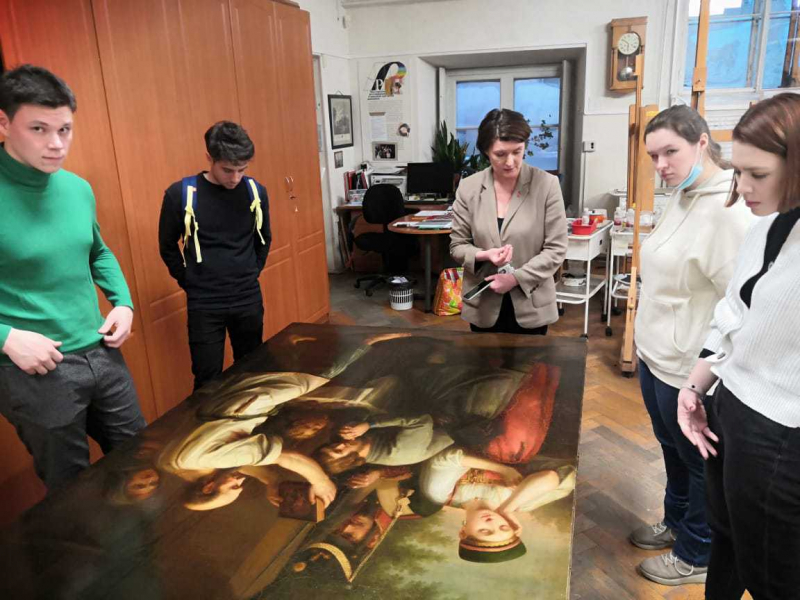
But the Russian Museum isn’t the lab’s only potential partner. The researchers share that in the future, they may get the chance to study objects from the collections of the State Hermitage Museum, the Kunstkamera, the Peterhof State Museum-Reserve, and the State Museum of the History of St. Petersburg, as well as launch joint projects with these institutions.
Another crucial part of the lab’s development will be the involvement of industrial partners.
Among the potential collaborators named by Olga Smolyanskaya are the companies IPG Photonics, Avesta, and Tydex – Russian suppliers of research equipment in the field of optics. Right now, the lab’s team procures compact equipment from foreign companies at a high price. Olga Smolyanskaya is confident that working with a domestic manufacturer as part of the Priority 2030 federal program will be beneficial for the university as well as the company, which would now have additional reasons to produce high-quality lasers, tomographs, and spectrometers.
“We need to bring together specialists from different fields: art historians, historians, museum employees, archeologists, physicists, chemists, and materials scientists. This will help us look at heritage science in a new way. If we don’t do that, we’ll keep working like 19th-century naturalists. So we’re very glad to have such a team that will help us accomplish all of the megagrant’s goals,” sums up Vincent Detalle.
